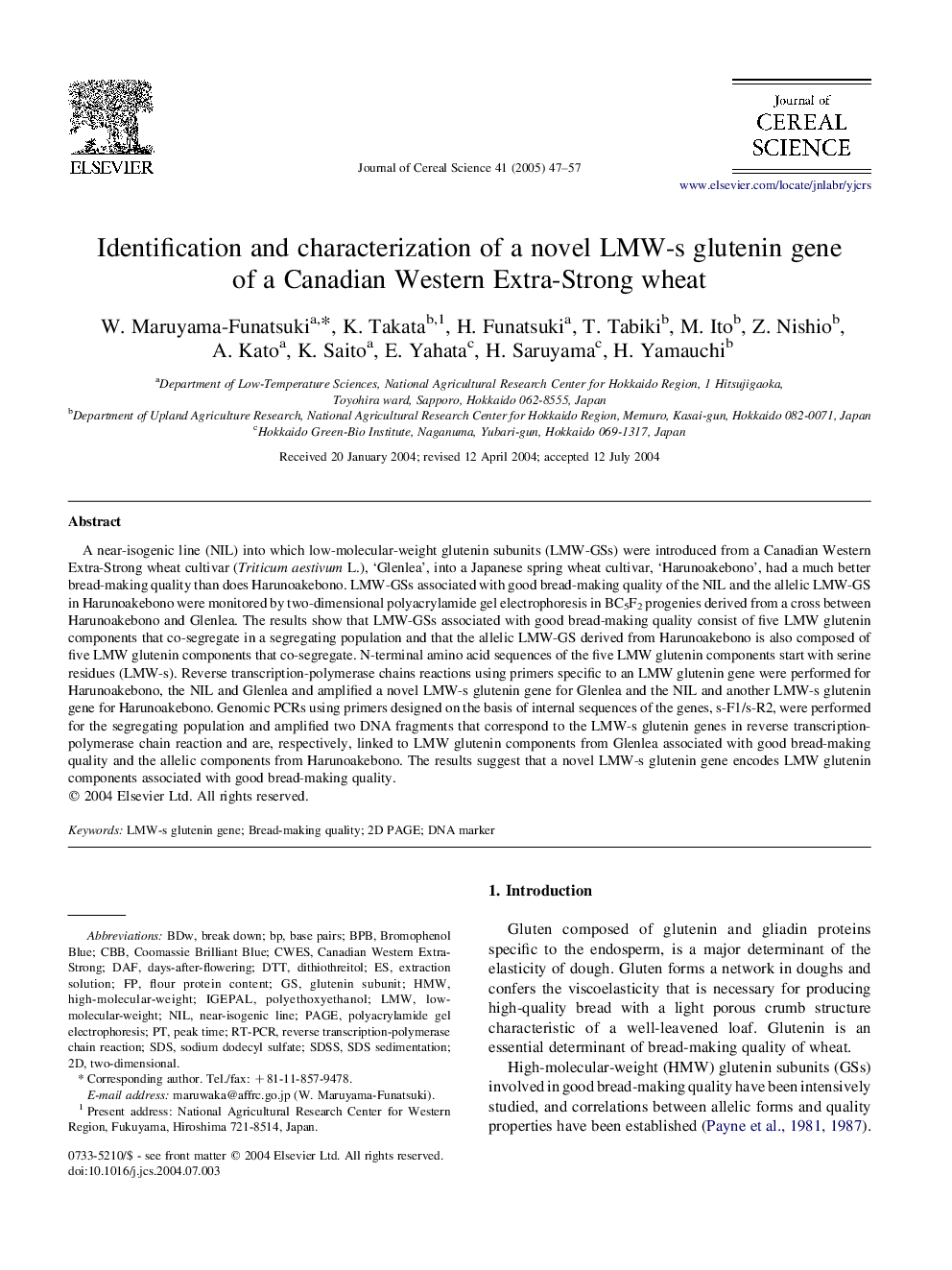| Article ID | Journal | Published Year | Pages | File Type |
|---|---|---|---|---|
| 9474554 | Journal of Cereal Science | 2005 | 11 Pages |
Abstract
A near-isogenic line (NIL) into which low-molecular-weight glutenin subunits (LMW-GSs) were introduced from a Canadian Western Extra-Strong wheat cultivar (Triticum aestivum L.), 'Glenlea', into a Japanese spring wheat cultivar, 'Harunoakebono', had a much better bread-making quality than does Harunoakebono. LMW-GSs associated with good bread-making quality of the NIL and the allelic LMW-GS in Harunoakebono were monitored by two-dimensional polyacrylamide gel electrophoresis in BC5F2 progenies derived from a cross between Harunoakebono and Glenlea. The results show that LMW-GSs associated with good bread-making quality consist of five LMW glutenin components that co-segregate in a segregating population and that the allelic LMW-GS derived from Harunoakebono is also composed of five LMW glutenin components that co-segregate. N-terminal amino acid sequences of the five LMW glutenin components start with serine residues (LMW-s). Reverse transcription-polymerase chains reactions using primers specific to an LMW glutenin gene were performed for Harunoakebono, the NIL and Glenlea and amplified a novel LMW-s glutenin gene for Glenlea and the NIL and another LMW-s glutenin gene for Harunoakebono. Genomic PCRs using primers designed on the basis of internal sequences of the genes, s-F1/s-R2, were performed for the segregating population and amplified two DNA fragments that correspond to the LMW-s glutenin genes in reverse transcription-polymerase chain reaction and are, respectively, linked to LMW glutenin components from Glenlea associated with good bread-making quality and the allelic components from Harunoakebono. The results suggest that a novel LMW-s glutenin gene encodes LMW glutenin components associated with good bread-making quality.
Keywords
SDSIGEPALSDSSNILBDWBPbHMWPAGECBBLMWDAFRT-PCRDTTCoomassie Brilliant Bluepolyacrylamide gel electrophoresisBromophenol Bluebase pairsNear-isogenic linetwo-dimensionaldithiothreitolPeak timesodium dodecyl sulfate2D PAGEDNA markerglutenin subunitreverse transcription-polymerase chain reactionHigh-molecular-weightlow-molecular-weightBread-making quality
Related Topics
Life Sciences
Agricultural and Biological Sciences
Agronomy and Crop Science
Authors
W. Maruyama-Funatsuki, K. Takata, H. Funatsuki, T. Tabiki, M. Ito, Z. Nishio, A. Kato, K. Saito, E. Yahata, H. Saruyama, H. Yamauchi,
